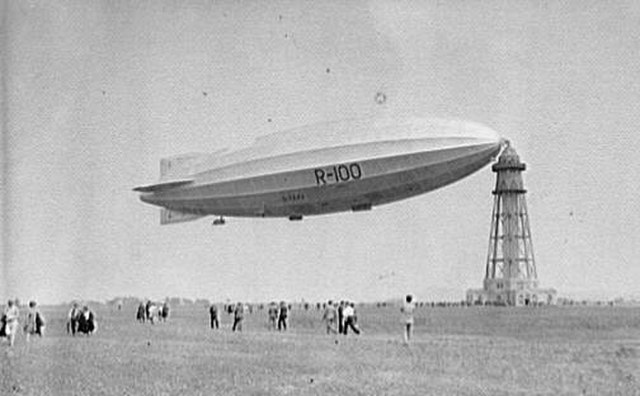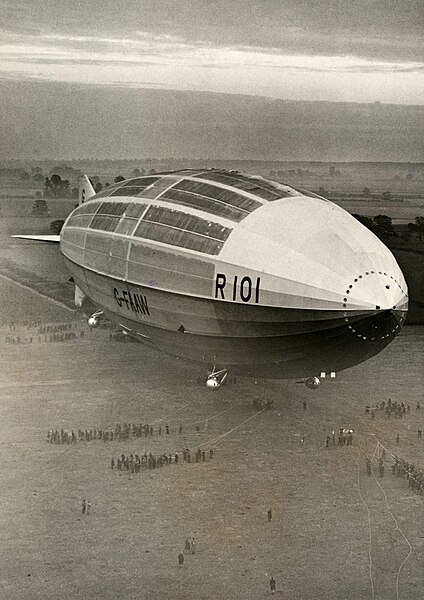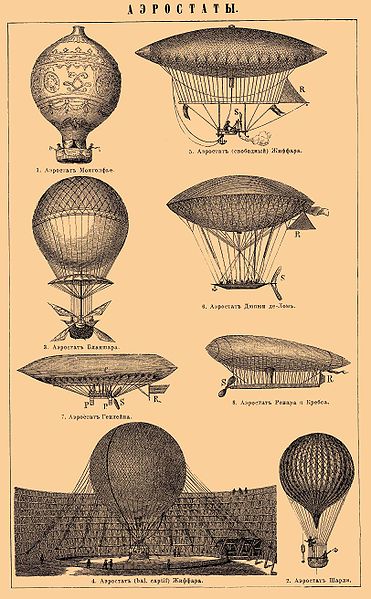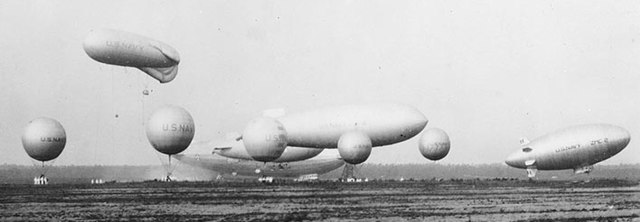The British Imperial Airship Scheme was a 1920s project to improve communication between Britain and the distant countries of the British Empire by establishing air routes using airships. The first phase was the construction of two large and technically advanced airships, the R100 and the R101; the R100 made a successful transatlantic crossing to Canada in 1930 in 78 hours. The scheme was terminated in 1931 following the crash in France of R101 in October 1930, while attempting its first flight to India.
The R100
The R101
An airship or dirigible balloon is a type of aerostat or lighter-than-air aircraft that can navigate through the air under its own power. Aerostats gain their lift from a lifting gas that is less dense than the surrounding air.
A modern airship, Zeppelin NT D-LZZF in 2010
Dirigible airships compared with related aerostats, from a turn-of-the-20th-century encyclopedia
U.S. Navy airships and balloons, 1931: in the background, ZR-3, in front of it, (l to r) J-3 or 4, K-1, ZMC-2, in front of them, "Caquot" observation balloon, and in foreground free balloons used for training
The air-filled red balloon acts as a simple ballonet inside the outer balloon, which is filled with lifting gas.






